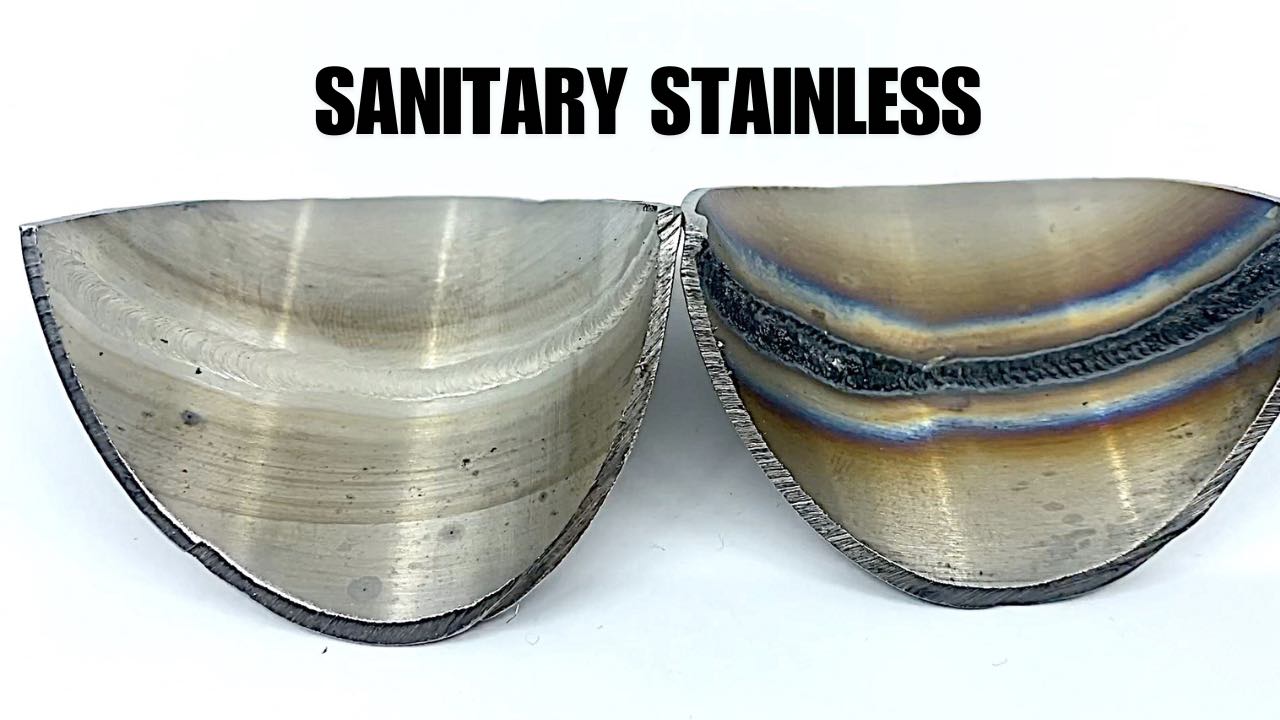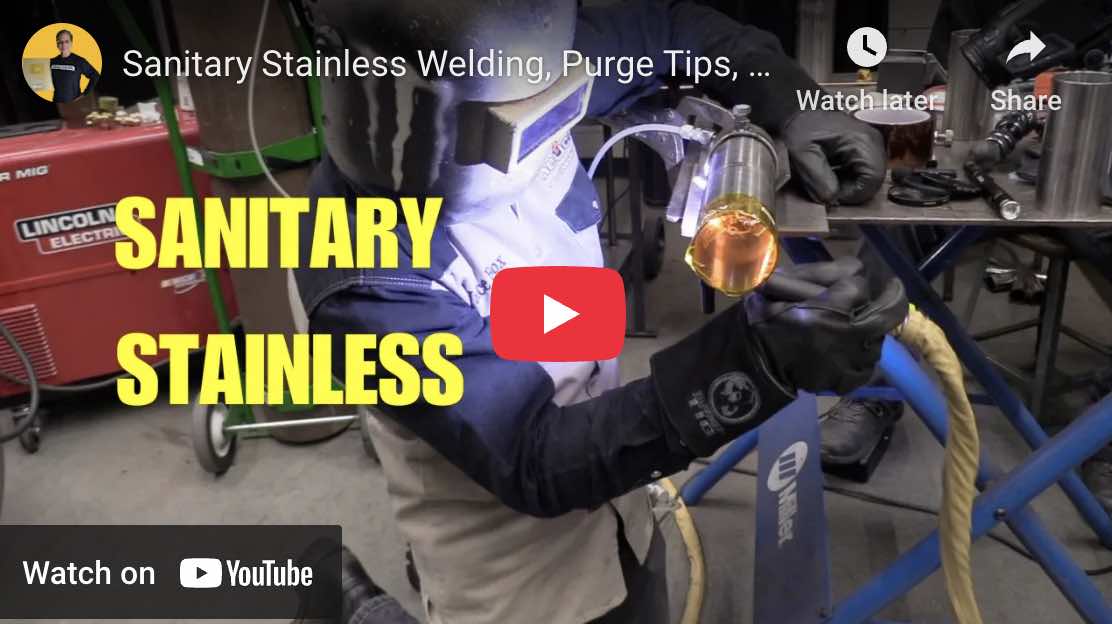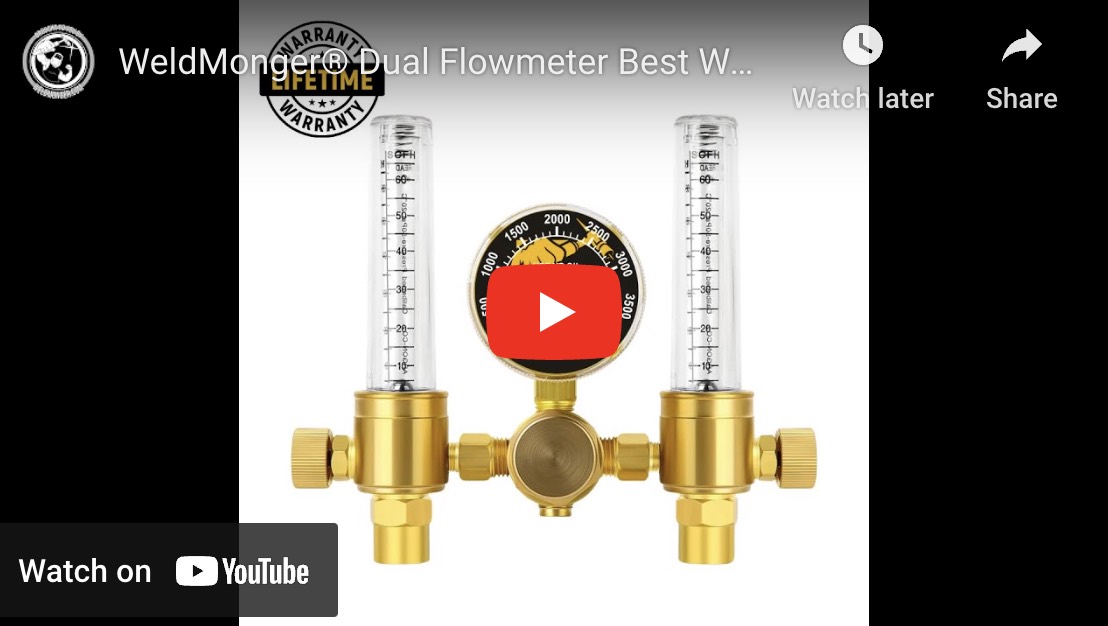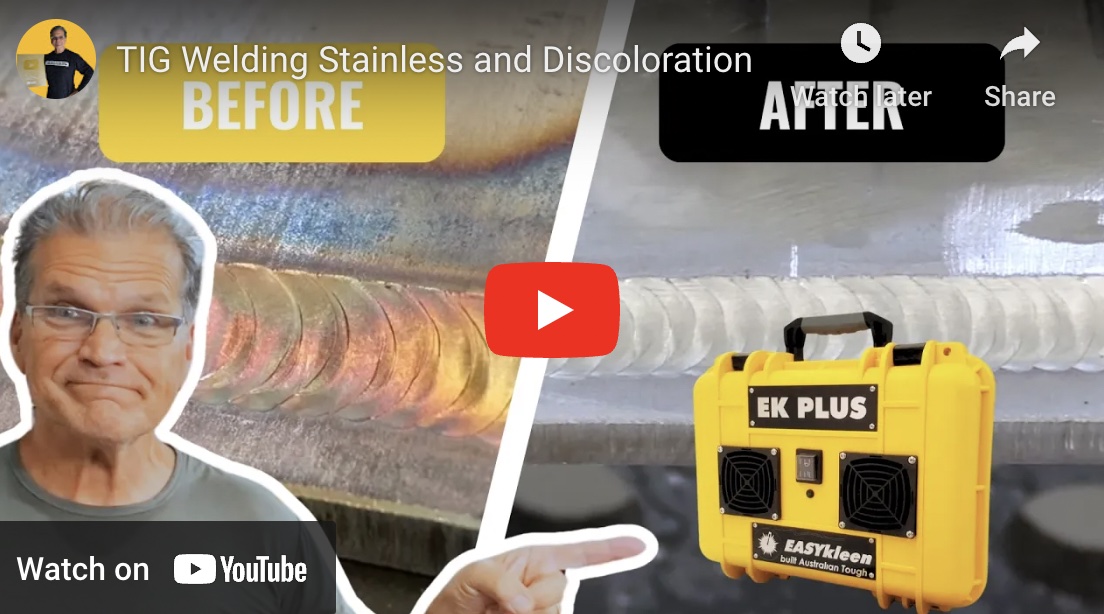Sanitary Stainless Steel TIG Welding
- HOME
- Tig Welding Stainless
- Tig Welding Stainless Steel
- Sanitary Stainless
- HOME
- Tig Welding Stainless
- Tig Welding Stainless Steel
- Sanitary Stainless
In the context of sanitary stainless steel welding, The word "sanitary" refers to the standards and practices required to ensure that the welds are clean, smooth, and free from contamination, making them suitable for use in industries where hygiene is critical. These industries include food and beverage processing, pharmaceuticals, dairy, and biotechnology.
Keys to successful Sanitary Stainless Steel TIG Welding
1. Smooth Surface Finish:
First off the inside of the pipe is the most important area.
This is the area that comes into contact with whatever product is being produced whether its orange juice, beer, chocolate syrup or medicine.
Of course you want the outside weld to look good too but what really matters is the inside...the purged root.
- The welds must be smooth and free of pits, cracks, and crevices where bacteria or other contaminants could accumulate. This often involves post-weld treatments such as polishing and passivation to achieve the required finish.
2. Clean Welding Environment:
- The welding environment must be kept clean to prevent contamination. This includes using clean tools, materials, and protective equipment. Any contaminants on the workpiece or welding tools can lead to weld defects that harbor bacteria.
Abrasives, files, fitup tools, etc need to be dedicated to stainless only.
3. Use of Inert Gas Purging:
- Purging with an inert gas (usually argon) on the inside of the pipe or tubing is essential to prevent oxidation and ensure that the internal surfaces of the welds are as clean and smooth as the external surfaces. This is critical for maintaining the sanitary conditions required.
A dual flowmeter makes this way easier. And also only requires one cylinder of argon
- HOME
- Tig Welding Stainless
- Tig Welding Stainless Steel
- Sanitary Stainless
There are requirements for root penetration and purge flow rates and vent holes need to be adjusted to achieve the right level of penetration so that excess concavity is avoided.
4. Weld Penetration and Consistency:
- Ensuring full penetration and consistent welds is key. Lack of penetration or inconsistent welds can create voids or areas where contaminants can accumulate, compromising the sanitary conditions of the weld.
5. Proper Welding Techniques:
- Either walking the cup or freehand techniques can be used effectively.
Amperage used for stainless is usually only about 2/3 of that needed for a comparable weld on carbon steel.
For example a 2 inch tube with .063" all thickness might only need 40-45 amps for full penetration.
6. Compliance with Standards:
- Sanitary welding must comply with industry standards and regulations, such as those set by the FDA (Food and Drug Administration) and other relevant bodies. These standards specify the requirements for weld quality, inspection, and testing to ensure sanitary conditions are maintained .
There is an AWS specification for sanitary welding too.
The AWS D18.1/D18 Specification for Welding of Austenitic Stainless Steel Tube and Pipe Systems in Sanitary (Hygienic) Applications covers welding standards for a variety of sanitary applications.
If you are interested in doing sanitary stainless steel welding, you will probably need to familiarize yourself with all applicable specs and codes.
Sanitary stainless steel welding is a specialized practice focused on creating welds that meet strict hygiene standards, essential for industries where cleanliness is paramount. This involves smooth surface finishes, clean welding environments, inert gas purging, proper weld penetration and consistency, precise welding techniques, and compliance with industry standards. By adhering to these practices, welds are made suitable for applications where preventing contamination is critical .
Purge vs Not Purged Sanitary Stainless Welds

















